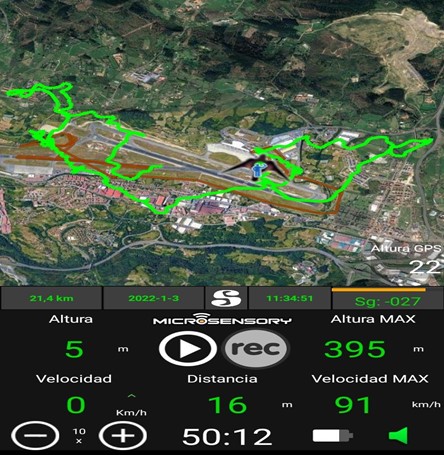Birds and aircraft share the skies, of course – and regrettably, sometimes they run into each other, a phenomenon which is known as birdstrikes – and which rarely end well for the birds. But aircraft and birds also come together on the ground at some airports, which are guarded by falcons – a family of avian uniquely suited to this task.

Why Airports Are for the Birds
There are two factors at airports which are important for the topic at hand: availability of food and shelter and an abundance of calm, undisturbed space. Both encourage birds and other types of fauna to seek to establish their territories and nesting areas there. And then a dilemma arises, because the settlement of birds (including the likes of crows, seagulls, and pigeons) can generate air safety problems such as head-on collision, birds ingested into aircraft turbines. And although the possibilities are very slim and a collision does not usually represent a serious problem, a bird getting into a turbine can. So since the dawn of aviation different measures have been implemented to avoid these problems.
Some of these measures include using chemical and organic repellents; habitat management; trapping and removal of wildlife; and even pyrotechnics to scare them off. But there is one that has been used for decades and furthermore is respectful of the environment: the use of falcons.
Birds of Prey Scare Them Away
Birds of the genus Falco, including some 40 species, are daytime predators which thanks to their sharp talons and beaks along with their immense aerial speed and agility – there are some species which can attain close to a breathtaking 400 kilometers (249 miles) per hour – hunt and feed on their prey in mid-flight and feed on them.
So complements of falcons is deployed at many airports to ward off other birds – they don´t even have to hunt them, because the simple presence of falcons is enough to frighten off any potential prey. Of course, they need training and control methods to ensure that their own flying is compatible with aircraft traffic as well as to enhance their ability to ward off other birds.
And that’s where “animal control technician” come in. These are professional specialized in falcon training as well as bird identification and trapping along with other techniques. These are not the traditional falconers of history and culture, who have used falcons for hunting dating back thousands of years. Now, in training falcons to watch the skies and controlling their flight behaviour in and near airports, their extraordinarily delicate and precise traditional techniques are adapted to the modern world and complemented by new technology such as GPS tracking systems). Different flight modalities for the falcons include marking, dispersion, and high flights.
Which Types of Falcons Are Best Suited to Airport Duty?
More than 300 species belong to the order of raptors known as falconiforms, including buzzards, condors, eagles, hawks, and vultures. Of these, 40 are of the genus Falco, which includes gyrfalcon (the largest, at 65 centimetres/26 inches in length), the peregrine, the saker, the woolly falcon, and various types of kestrel). There are also other types of falcons that are the product of hybridisation between some of these. And it should be noted that different types of falcons are deployed to different airports depending on the types of other birds involved, and their size.

The Use of Airport Falcons in Spain
As in many countries, the domestication and use of falcons in Spain dates back to the Middle Ages. But this particular use of these birds is only just over a half century old. One of Spain’s pioneering naturalists – and who was also a falconer – was one Félix Rodríguez de la Fuente, a Spanish David Attenborough, Jeff Corwin, or Marlin Perkins whose narrated a documentary series El Hombre y la Tierra (Man and the Earth) on Spain’s airwaves from 1974 to 1981 and showed animals in their natural habitats, delighting nature-minded children and adults alike. Before that series, in 1968, De la Fuente suggested using falcons at the U.S. Air Force‘s base in Torrejón de Ardoz outside Madrid to expel bustards, which tended to collide with fighter planes both during landing and takeoff. Its success was such that this technique was brought first to Madrid’s Barajas Airport and later to practically all the rest of the country’s airfields.

